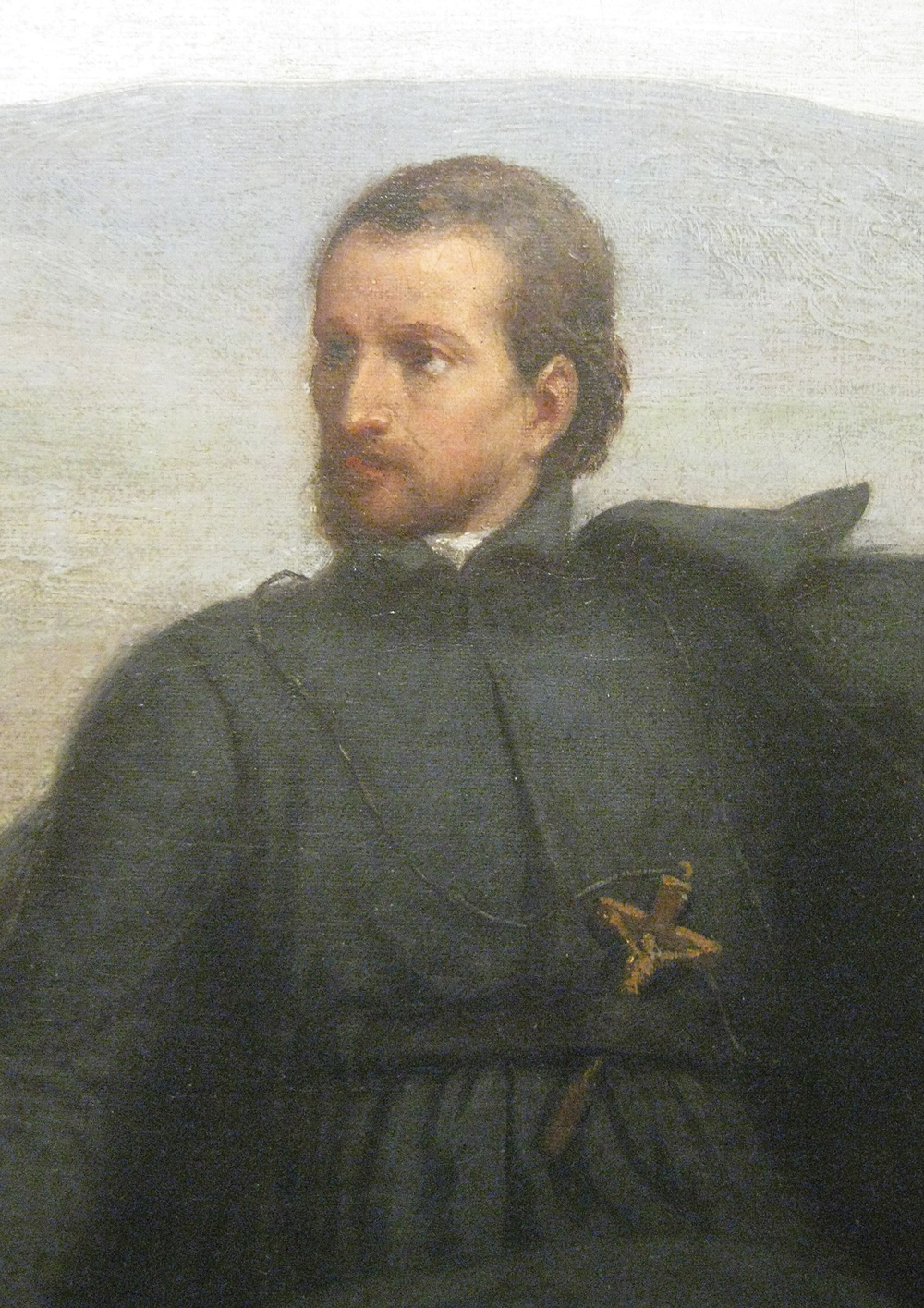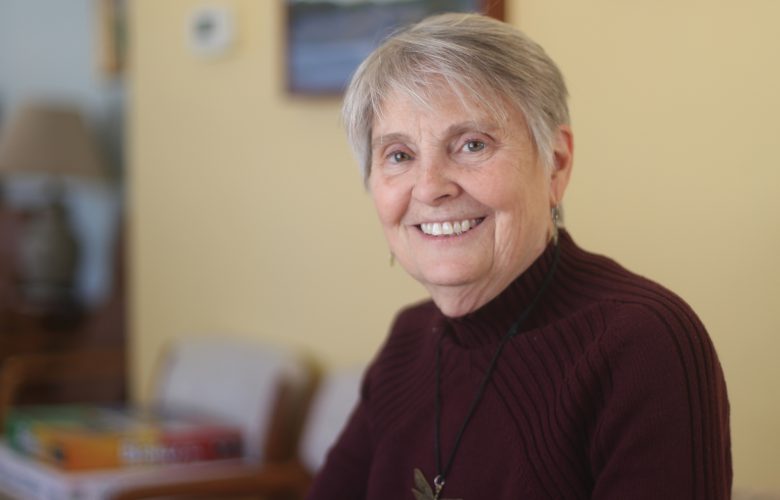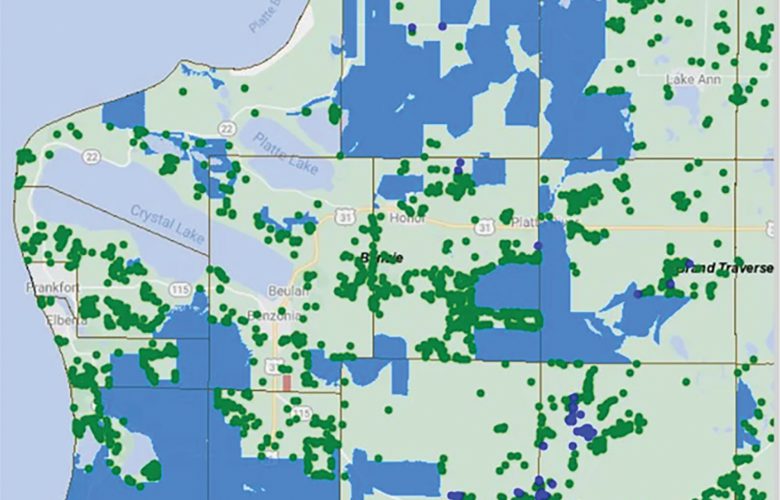By P.G. Misty Sheehan
Current Contributor
Father Jacques Marquette (1637-1675) was one of the most famous of the Jesuit priests who came over to the “New World” to work with the Native Americans.
Assigned to “New France” in 1666 as a missionary, he arrived in Quebec, and later was reassigned further up the St. Lawrence River to the Great Lakes region in 1668. He loved this assignment. He said in his journal: “God surely has had pity on me since I have been in this country, I have not felt any dislike for it or the least desire for France.”
Though Sault Ste. Marie had been settled by the Native Americans more than 12,000 years prior, Marquette helped to found a Catholic mission there in 1668, which made it the first permanent European settlement in what would later become known as the Midwest region.
Marquette studied local languages, becoming fluent in six dialects. His missionary work was done in a canoe from Sault Ste. Marie through Michilimackinac, then on to Green Bay, Wisconsin. His last voyage in May 1673 took him from Green Bay to the Fox River and over a portage to the Wisconsin River. He followed this river with his companions—including the famous French-Canadian explorer Louis Jolliet—until they found the Mississippi River, which the Illinois peoples had described to Marquette as an important trading route and which had been the impetus for the journey.
They were the first of European descent to map the northern portion of the Mississippi, as they then paddled down toward the mouth of the Arkansas River, until they were warned back by the indigenous communities.
They returned up the Illinois River to Lake Michigan, and Marquette paddled up to a mission in Green Bay.
In late 1674, he made his way south to camp in what would become Chicago. On a trip up the east coast of Lake Michigan to St. Ignace, he had a relapse of dysentery that he had contracted while on the Mississippi. He died at age 37 on May 18, 1675.
Legends of his death tell how another of the voyageurs was also very ill but prayed at Marquette’s gravesite and immediately became well again.
After two years, the priest’s body was moved to St. Ignace. Now the question—where did he come ashore to die?
And this is the dilemma.
Two great scholars have researched his life and death and reached different conclusions. Raphael N. Hamilton, retired professor of history at Marquette University in Wisconsin, said that Father Marquette died in Ludington. Meanwhile, Catherine L. Stebbins, of Frankfort, asserted that he died in Frankfort. Two Michigan State Historical Society plaques—one in Ludington and one in Frankfort—state that Father Marquette died in those cities.
Which is right? And why are there two?
In 1960, Stebbins proclaimed that Frankfort was Marquette’s place of death. Able to read French, she went to the Provincial Archives in Quebec to review the writings of French priests. She read accounts in their journals of the lives of the early priests—Father Claude Dablon (1618-1697), the Reverend Pierre-Francois-Xavier de Charlevoix (1682-1761), and the cartographer Jacques-Nicolas Bellin (1703-1772). Besides reading original texts in French, she drove the coastline from opposite the Manitou Islands in the north to Ludington in the south; on her trip, she measured the mouths of the many rivers and creeks that flow into Lake Michigan. And those measurements matched her readings.
In her 1960 book, Here I Shall Finish My Voyage, Stebbins demonstrated that the harbor in Ludington in no way matched the description in Charlevoix’s journal, but that Frankfort’s Betsie Bay did. She claimed that the Pere Marquette River—which empties into Lake Michigan at Ludington—was 64 miles too far south to be the correct river. She also claimed that people in Ludington were using an English translation of the original texts which had incorrect placement of the rivers that flow into the lake. The true river is the Betsie River, Stebbins asserted; she also said that Native American tradition claims Betsie Bay as the place of Marquette’s death.
Her description was enough to convince the Michigan Historical Commission to declare that Frankfort was indeed the final resting place of Father Marquette. The Detroit Free Press in July 1965 wrote: “The Michigan Historical Commission has bowed to the weight of new evidence and designated Frankfort rather than Ludington as the probable site where Father Marquette died in May.”
But wait! Raphael Hamilton, professor emeritus of history at Marquette University, in his compilation of a 1970 biography on Father Marquette, stated that Ludington was the place where he died. He was aware of Stebbins’ account and attempted to show that she was seriously incorrect.
Hamilton’s strongest argument is that, in 1815, a red cedar cross was found on the bank of the river in Ludington. He felt that Native Americans had repeatedly replaced it there over the years, as older ones were blown over or rotted, due to their reverence for the Father.
He also had read the 1761 English edition of Charlevoix’s Journal of a Voyage to North America. Though Hamilton did not read the original French, as Stebbins had, he said that she had mistranslated a word which denies that Frankfort was the burial place. He also complained that she used the word “axe” when it was not in the original text.
Finally, Hamilton said that the Pere Marquette River is the third river south of the Manitou Islands, as the English edition says. His theory led to a second and later posting by the Michigan Historical Center as to the place of Marquette’s death.
But wait—Stebbins is not through yet! She disagreed with Hamilton’s pejorative treatment of her language skills. She said that her calculations were correct; that tracing three rivers south of the Manitous brings Marquette’s death to the Betsie. The three rivers she named were Otter Creek, the Platte River, and the Betsie.
So, we are stuck. Both scholars based their understandings on good evidence.
A call to the Michigan Historical Center did not offer much guidance.
“We just don’t know!” says Sandra Clark, director of the Michigan Historical Center, laughing. “Other theories have arisen since then.”
Moreover, an email to the Grand Traverse Band of Ottawa and Chippewa Indians further complicates things. The Betsie Current reached out, and a spokesperson said that they could not confidently give a response about Father Marquette’s place of death, since traditionally indigenous people speak of where their spirits come from, but never about the place of death.
Though the story fades off into mysticism or to legendary status, in both Ludington and Frankfort, the historic sites bring comfort and closure to those who revere those sites and the man, now buried in Straits State Park, near St. Ignace, known as the Father Marquette National Memorial.
P. G. Misty Sheehan is a retired professor of humanities at Chicago’s College of Dupage and former executive director of the Benzie Area Historical Society and Museum. A version of this article was first published in the Freshwater Reporter, a semi-sister publication to The Betsie Current.
Featured Photo: Father Jacque Marquette (1637-1675) was a missionary priest who traveled the Great Lakes region and beyond. Though his travels were extensive, it is his place of death that remains a mystery. Oil painting (1869) by Wilhelm Lamprecht (1838–1906), at Marquette University. Image courtesy of Wikipedia.





Great story! I remember reading about this in the 70’s. The debate over numbers of creeks and river mouths in the contention over where Father Marquette died and what exactly constitues a river/creek and was it the same in 1675. Thanks for the update.